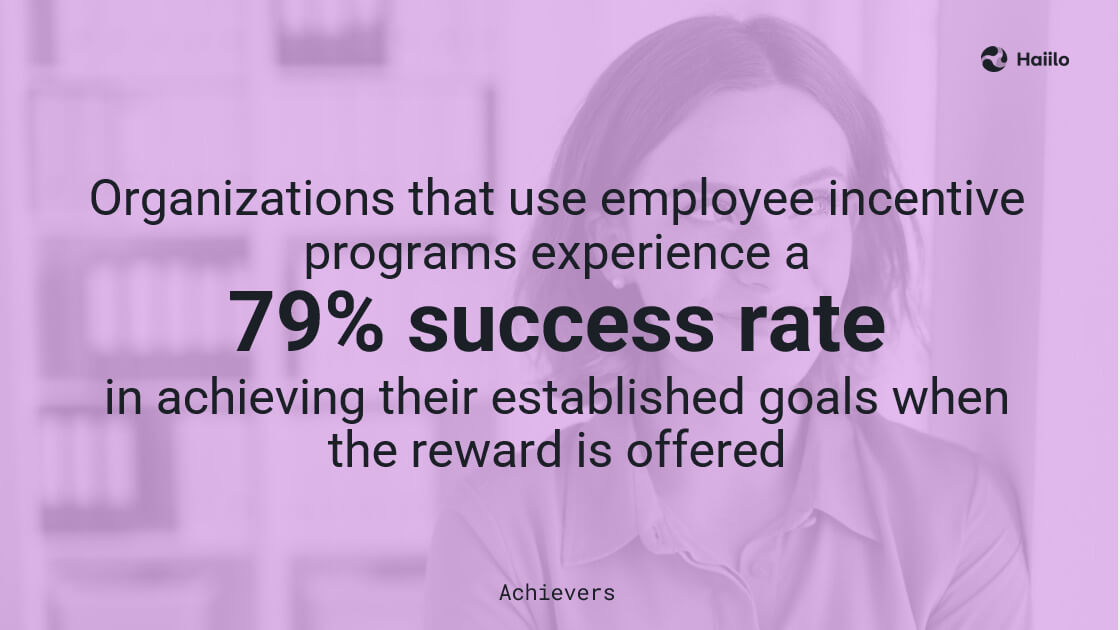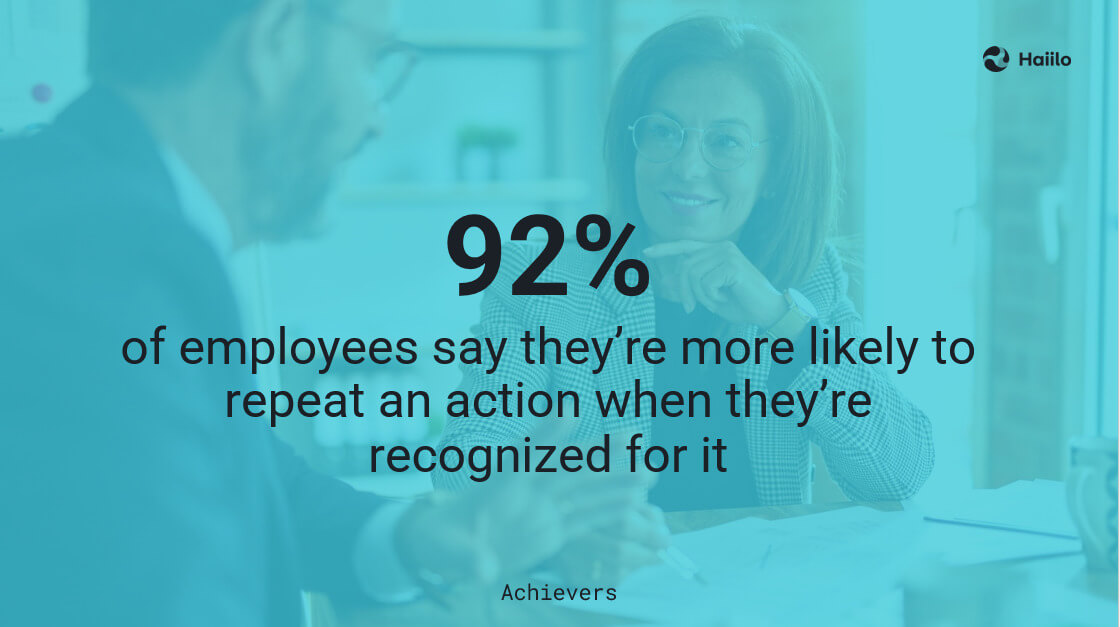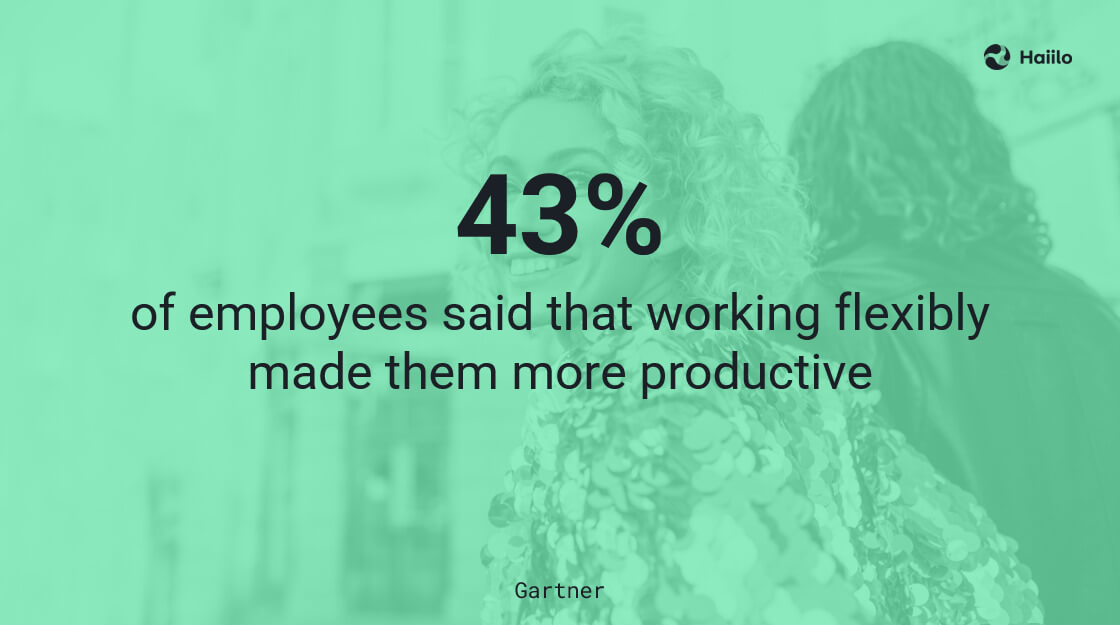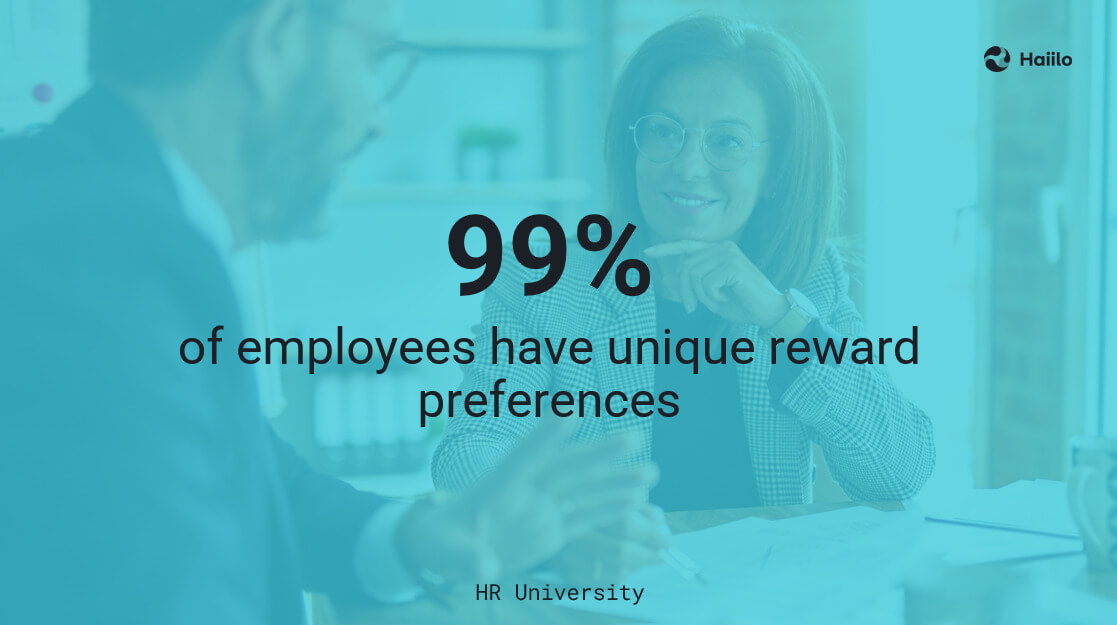Employee incentive programs are a great way to boost employee morale, motivation, and engagement in the workplace. Research in business and academia has proved the value of employee incentives in improving the overall employee experience in the workplace.
So in this blog, we will give you some great ideas for employee incentive programs and walk you through the steps for implementing a successful program.
What Is an Employee Incentive Program
Employee incentive programs are any workplace initiatives designed to boost employee satisfaction, motivation, and engagement at work. Some of them may even focus on improving the employer brand and the company’s ability to attract and hire the best talent to their organization. Others can be aligned with the company’s bottom line and used to boost the company’s overall performance and profitability.
After all, it’s important to understand that the best programs are built upon the biggest drivers of positive employee experience and are usually aligned with the company’s core values.
There are many different types of employee incentive programs, and we will cover some of them later in this blog. Even though some employers may argue that they don’t have additional budgets for employee incentive programs, they don’t always have to be monetary. In fact, many employees are more motivated by non-monetary than monetary rewards.
Drive adoption of employee incentive programs with Haiilo
The Importance of Employee Incentive Programs
According to research, organizations that use employee incentive programs experience a 79% success rate in achieving their established goals when the reward is offered.

Furthermore, well-structured incentive programs can increase employee performance by as much as 44% and motivate up to 66% of employees to remain with their company.
Another research confirmed this fact and found that 78% of employees are willing to remain with their current employment due to the competitive benefits of employee incentive programs.
Other than that, employee incentive programs are a great way to boost employee morale and improve the overall company culture. Acts of recognition give employees the reassurance that they are valuable to your organization and that their work is appreciated.
📹 Also, check out our Masterclass about how to drive employee motivation and performance in the workplace!
9 Employee Incentive Program Ideas
Now that you understand the benefits of employee incentives let’s dive deeper into some of the best ideas for employee incentive programs.
1. Recognition and rewards program
Implementing an official employee recognition and rewards program can go a long way in boosting employee motivation, morale, engagement, and performance.
They are a great way to embed desirable behaviors in the workplace.
According to research, 92% of employees say they’re more likely to repeat an action when they’re recognized for it.

This is why it’s critical that you align your recognition program with your company’s goals and objectives. For example, suppose one of your company’s goals is to attract more high-quality job candidates. In that case, you can design a recognition program encouraging employees to participate in your employer branding and talent acquisition efforts.
If your goal is to improve your company’s financials, you could reward employees every time they save your company additional expenses.
2. Referral programs
Based on research, 82% of employers rate employee referrals the highest in terms of ROI. Referred candidates are often best-quality new hires who stay with their employers longer than candidates from other sources.
So many organizations have incentive programs that focus on driving more referrals from existing employees.
To get the most out of this incentive program, consider rewarding employees based on the stage their candidate has entered. Even if the referred candidate doesn’t get hired but enters the last interview round, you could consider rewarding the referee with a portion of the total reward.
3. Stock options and profit sharing
Many employees see profit sharing as a very attractive incentive program. Profit sharing happens when a company distributes a portion of its annual profit to its employees.
If set up right, profit sharing can be a great tool for boosting employee motivation and productivity while aligning with the company’s long-term goals.
Another type of employee benefit is the employee stock ownership plan, in which the employee earns an equity stake in the company.
Most stock options incentives focus on increasing loyalty toward the company, where employees’ shares increase with tenure.
4. Career development and tuition reimbursement
According to recent reports, up to 94% of employees are willing to stay in their company for a long time if their employer invests in their long-term career and gave them the chance to step up and develop their skills.
Hence, you could have an employee incentive program that encourages employees to grow in their careers and invest in continuous learning. For example, consider having a yearly education budget where workers can choose a course or training related to their job position.
Sometimes, this is one of the best ways to recognize your employees!
5. Travel and wellness incentives
53% of U.S. adults believe traveling is essential to learning about new cultures and gaining new ways of life, and 86% think it’s important to incorporate wellness (i.e.yoga, healthy meals, etc.) into travel reward programs.
Today, relaxing and getting away from the daily stress is a luxury for many people. So offering such incentives in the workplace is a great way to improve employees’ health and mental well-being.
6. Days off and flexible work arrangements
Flexible working incentives have many benefits. But one big benefit for businesses is an increase in output. In fact, a 2021 Gartner survey recorded that 43% of respondents said that working flexibly made them more productive.

This trend has emerged with the recent pandemic, but it seems like many organizations have recognized the positive sides of offering more flexible work arrangements to their people.
7. Employee advocacy incentives
Employee advocacy can greatly improve your company’s marketing, sales, and talent acquisition efforts.
Employees who act as your brand ambassadors and regularly share your company’s content on their social media networks can significantly improve your organization’s reach, awareness, and brand trust.
Sales professionals can significantly improve their social selling performance and drive more high-quality opportunities and new sales.
Lastly, you can leverage your employees to help you improve your recruitment marketing programs, boost your employer brand, and attract high-quality job candidates.
You could incentivize your employees whenever they share your company’s content and give them points they can later redeem for a gift of choice.
8. Charitable donations
Some people enjoy giving back to their local community or other non-profit organizations. Therefore, consider implementing an incentive program in which employees can donate on their behalf for their good work.
9. Choose your own incentive
Even though many of the above-mentioned incentive programs sound great, they may not be motivating for some people.
So more and more employers are adopting a new trend of enabling employees to choose their own rewards.
Alternatively, you could engage your employees in designing and creating your incentive programs where programs are designed based on employees’ feedback.
More about this in the next section!
How to Implement Employee Incentive Programs That Work
Now you have some ideas for employee incentive programs you can easily implement in your organization. But how to get the best possible ROI for your new initiatives?
Let’s take a look.
1. Define goals
Every incentive program should be designed to achieve a certain organizational goal. This is the only way to measure the success and ROI of your initiatives.
If you, for example, get low results on your employee engagement surveys, you could leverage employee incentive programs to boost employee engagement in your organization.
If your company suffers from high employee turnover rates, incentives can be a very powerful tool for boosting employee loyalty and retention.
The beauty of employee incentive programs is that you can tie them with various and very specific goals, projects, and company milestones. You can align them with your company’s core values to encourage your workforce to live by them.
2. Co-design the program with your employees
99% of employees have unique reward preferences, which makes incentives a good alternative to a traditional reward system.

Instead of guessing your employees’ preferred incentives, you can engage them directly in creating your incentive program.
The simplest way to do that is by distributing a simple employee survey. Your first round of surveys could be an open-text question where employees can suggest various incentives. Then, you could put together a list of the top 5 to 10 incentives and send another survey where employees vote for their favorite ones.
Remember, the more attractive incentives are to your employees, the more impactful your incentive program will be.
3. Define processes and procedures
Once you have identified incentive programs you want to launch, it’s important that you define processes and procedures for participation.
Employees need to understand the criteria for eligibility and the process for acquiring and redeeming those incentives.
4. Communicate internally and drive engagement
Now it’s time for internal marketing. This is a critical step for driving the adoption and engagement of your new initiative.
You can think of a few different internal campaigns to inform and motivate your employees to participate. For example, you could send out an employee newsletter to announce the new program and share processes and procedures.
You could have an internal podcast where employees can ask any questions about the program. An announcement in your organization’s intranet and instant messaging platforms is obvious, but you could also consider some digital signage to boost the visibility even more.
5. Measure performance
A month into your new incentive program, you could already start measuring the impact of it on your previously defined goals.
For example, suppose your incentive program was launched to increase the number of high-quality job candidates through referrals. In that case, it should be very easy to perform a before and after analysis.
If your incentive program was created to boost employee advocacy, your employee advocacy platform should be able to give you historical data on your employees’ engagement on social media.
Download our Employee Engagement Report and learn what drives and motivates modern employees!









